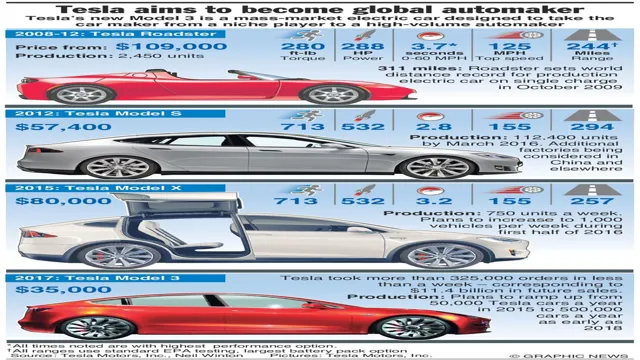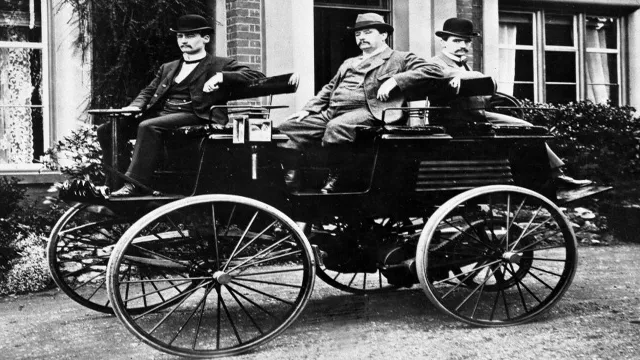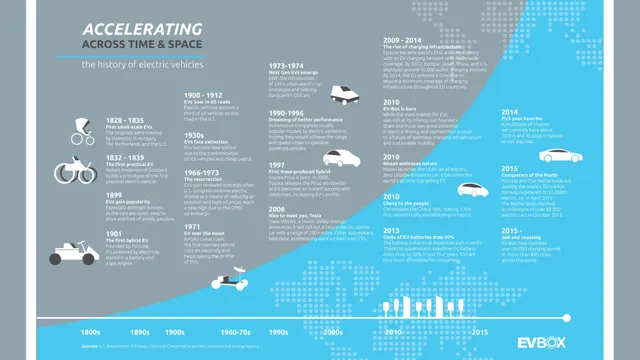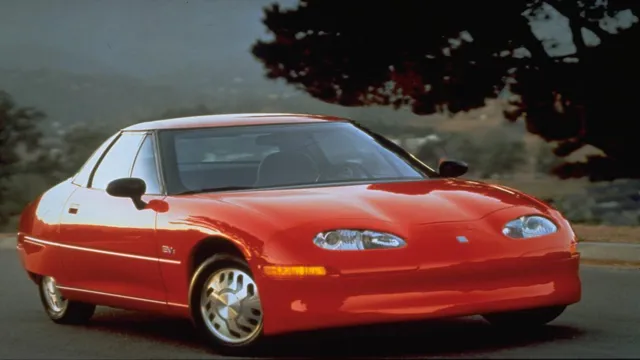Revolution on Wheels: Tracing the Timeline of Electric Cars through History
Electric cars have been around for quite some time, but it wasn’t until fairly recently that they began to gain widespread attention and popularity. With the global push for a cleaner, more sustainable future, electric cars have become a symbol of innovation and progress – not to mention a convenient way to get around without harming the environment. Let’s take a look at the history of the electric car, from its early beginnings in the 19th century to the present day.
We’ll explore key milestones and innovations, as well as the challenges that have had to be overcome in order to make electric vehicles mainstream. Through this timeline, we’ll learn how early adopters paved the way for today’s electric car manufacturers, and how technological advancements have made electric cars more affordable, efficient, and reliable than ever before. Whether you’re an electric car enthusiast or just curious about the future of transportation, this timeline will offer valuable insights into the fascinating world of electric cars.
So let’s start the journey, and see how the electric car has evolved over time!
Early Development (1832-1880s)
Electric car history timeline shows us that the development of electric vehicles began in the early 1830s. It was during this period that Robert Anderson invented the first crude electric carriage powered by non-rechargeable primary cells. The production of more efficient secondary cells in the late 1850s paved the way for the development of more advanced electric vehicles.
By the 1880s, electric cars had gained recognition as a major competitor to gasoline-powered cars, particularly in urban areas. William Morrison, a chemist from Des Moines, Iowa, developed the first successful electric vehicle in the US in 188 His vehicle was capable of reaching a top speed of 14 miles per hour and could travel up to 45 miles on a single charge.
The electric car was well received during this time, and prominent car manufacturers such as Thomas Parker and Ferdinand Porsche both developed successful models. The early development of electric cars shows us that electric vehicles were considered a promising alternative to gasoline-powered cars, and we can see how they have evolved into the advanced electric vehicles that we know today.
First electric carriage
Electric carriage The development of the first electric carriage dates back to the early 1830s when Robert Anderson, a Scottish inventor, created the first crude electric vehicle. Later on, in the 1880s, Thomas Parker, a British inventor, developed the first practical electric car. Although it was just a small tricycle, it was the beginning of a new era in transportation.
Parker’s electric car was powered by rechargeable batteries and had a range of up to 100 miles on a single charge. This was a significant improvement over the gasoline-powered cars of the time, which were extremely noisy, polluting, and required frequent refueling. Parker’s electric carriage was a major breakthrough, and it caught the attention of the public.
The electric car was quiet, clean, efficient, and required minimal maintenance, making it a popular choice for urban transportation. However, the electric car faced many challenges, including the high cost of production and limited range. As a result, gasoline-powered cars eventually became the norm, and the electric car was largely forgotten for several decades.
Today, the electric car is experiencing a renaissance as people are becoming more conscious of environmental issues and the harmful effects of fossil fuels. With advances in technology, electric cars have become more affordable, reliable, and have significantly increased range. Electric car manufacturers such as Tesla, Nissan, and General Motors are at the forefront of this revolution, and the future looks bright for electric cars as they become more mainstream.
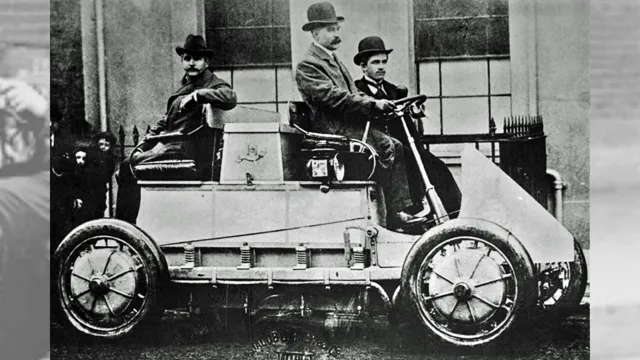
Development of rechargeable batteries
Rechargeable batteries have become an essential part of modern life, powering devices ranging from smartphones to electric cars. But did you know that the development of rechargeable batteries dates back to the early 19th century? The first rechargeable battery was developed in 1832 by a British chemist named John Frederic Dani. Dani’s battery used two electrodes, one made of copper and the other made of zinc, immersed in an electrolyte solution of sulfuric acid.
This battery was able to recharge itself through a process known as electroplating, where a current is applied to reverse the chemical reaction that produced the battery’s electricity. Despite this innovation, Dani’s battery was not practical for widespread use as it was heavy, had a short lifespan, and was prone to leaks. Over the next few decades, various chemists experimented with different materials, such as lead-acid and nickel-iron, leading to the development of more practical rechargeable batteries.
Rise and Fall (1890s-1920s)
Electric car history timeline shows that the rise and fall of electric vehicles occurred between the 1890s to the 1920s. It all started when electric cars were first introduced in the late 1800s, and they quickly became fashionable in the high society and the urban population. The electric cars were favored due to their quiet ride and absence of emissions, making them the ultimate choice for city dwellers.
In the early 1900s, electric vehicles had around a third of the automobile market globally. However, the downfall of electric cars began with the mass production of gasoline-powered vehicles that proved to be both cheaper and faster than electric ones. As the cost of gasoline went down, internal combustion engine cars with greater range and speed overpowered the appeal of electric cars.
The infamous Model T Ford was also a contributing factor. The invention of the starter motor further boosted the popularity of gas-powered vehicles. Thus, the majority of consumers abandoned electric vehicles, and the companies manufacturing them went bankrupt.
Introduction of electric taxis in cities
Back in the 1890s to the 1920s, electric taxis were all the rage, with major cities such as London, Paris, and New York City adopting the new mode of transportation. These electric taxis were seen as a cleaner and quieter alternative to the gasoline-fueled cars that were becoming increasingly popular at the time. However, despite their initial popularity, the electric taxis soon began to fade away.
One of the main reasons for this decline was the introduction of mass-produced gasoline cars. Gasoline cars were seen as having more power and range than their electric counterparts, which made them a more desirable option. Additionally, the availability of cheaper gasoline made it more affordable for people to own gasoline cars.
Eventually, electric taxis became a thing of the past. However, with the rise of environmentally conscious movements and advancements in technology, electric taxis are starting to make a comeback in major cities around the world.
Competition from gasoline-powered cars leads to decline
During the late 1800s to early 1900s, the rise of electric cars was undermined by the competition from gasoline-powered cars, which led to the eventual decline of the former. While electric cars initially held an advantage due to their quieter engines and cleaner emissions, the invention of the electric starter in gasoline cars made them more convenient and easier to operate. Gasoline cars also had a longer driving range, making them a more practical choice for long-distance travel.
As a result, electric cars slowly lost popularity, and by the 1920s, gasoline cars had taken the lead. The decline of electric cars during this period proves that the market is highly susceptible to technological advances. It also highlights the importance of convenience and practicality, as consumers tend to prefer products that are easier to use and more versatile.
Despite this setback, however, electric cars would make a comeback in the 21st century, thanks to advances in battery and motor technology, and a growing concern for the environment and sustainability. Therefore, while many may have written off electric cars in the past, their ability to rise from the ashes is proof that innovation and resilience can go a long way.
Revival (1970s-1990s)
The 1970s-1990s saw a significant revival in the development of electric cars. After years of being relegated to the fringes, the oil crisis of the 1970s catalyzed renewed interest in electric vehicles. Automakers like General Motors and Ford began investing heavily in the technology, which culminated in General Motors producing the EV1 in the 1990s.
However, despite an initial surge of popularity, electric cars were still seen as too expensive and impractical for most people, and many automakers, including General Motors, ultimately discontinued their electric vehicle programs. But, even though it took a few more decades for electric cars to really take off, this era planted important seeds that would eventually lead to today’s electric car renaissance.
Oil crisis prompts renewed interest in electric cars
The oil crisis of the 1970s and 1980s spurred a renewed interest in electric cars. With oil prices skyrocketing and fuel shortages becoming more frequent, people were looking for alternative ways to power their vehicles. This led to a revival of electric cars during the 1990s, with major automakers investing in research and development to create viable electric vehicles.
While these early electric cars had limitations, such as their short driving range and long charging times, they were seen as a promising solution to the problems caused by the oil crisis. Over the next few decades, as technology improved, electric cars continued to gain popularity and become more practical for everyday use. Today, electric cars are seen as a viable and environmentally friendly alternative to traditional gas-powered vehicles, and their popularity only continues to grow.
California mandates zero-emissions vehicles
California has always been a leader in the push for cleaner air and reducing greenhouse gas emissions. In the 1970s, when air pollution was at an all-time high, the state government took the initiative to combat the problem, which led to the formation of the California Air Resources Board (CARB). The 1980s and 1990s saw a surge in technological advancements and stricter regulations on emissions, which resulted in the rise of zero-emissions vehicles like electric cars and hydrogen fuel cells.
In recent years, California has once again taken a bold step towards a cleaner future by mandating that all new passenger cars and trucks sold in the state must be zero-emissions vehicles by 203 This is a significant move that will not only reduce pollution but also push the automotive industry towards a more sustainable future. The future of transportation is definitely electric and California is leading the way in this transition.
Mainstream Adoption (2000s-Present)
The early 2000s marked the beginning of mainstream adoption for electric cars, with major automakers like Tesla, Nissan, and General Motors introducing models that could go longer distances on a single charge. In 2006, Tesla unveiled their Roadster, a sleek electric sports car that could travel up to 245 miles on a single charge. Nissan followed suit in 2010 with their more affordable Leaf model, which quickly became the world’s best-selling electric car.
More recently, the popularity of electric cars has continued to grow, thanks in part to government incentives and more charging infrastructure being built. As a result, electric car sales have increased significantly in recent years, with global sales surpassing 2 million in 201 With ongoing advancements in battery technology and electric car design, the future looks promising for these eco-friendly vehicles.
Introduction of Tesla Roadster and Nissan Leaf
The 2000s marked the beginning of mainstream adoption of electric vehicles, with the introduction of the Tesla Roadster and Nissan Leaf. This was a turning point for the automotive industry as it represented a shift towards sustainability and environmentally-friendly alternatives. The Tesla Roadster was a game-changer, with its sleek design, impressive acceleration, and range of over 200 miles on a single charge.
It quickly became a status symbol for environmentally-conscious consumers who were willing to pay a premium for its unique features. The Nissan Leaf, on the other hand, was more affordable and targeted towards the mass market. It boasted an impressive range of up to 150 miles and appealed to everyday drivers who were seeking a practical, yet eco-friendly solution.
Both vehicles received critical acclaim and paved the way for a new era of electric cars. As the years went by, more automakers started to follow suit and developed their own EVs, making it clear that the future of the automotive industry was electric.
Growing popularity and availability of electric cars
The growing popularity and availability of electric cars in recent years can be attributed to their mainstream adoption which started in the 2000s. As more people become concerned about the environment and look for ways to reduce their carbon footprint, electric cars have become a viable alternative to traditional gas-powered vehicles. With technological advancements, electric cars have become more affordable and practical for everyday use.
They also offer numerous advantages such as lower fuel and maintenance costs, smoother and quieter rides, and reduced emissions. Additionally, governments and businesses incentivize the use of electric cars by offering tax credits, rebates, and charging infrastructure. The demand for electric cars is expected to continue to grow, which will lead to further innovation and improvements in the technology.
As we shift towards a sustainable future, electric cars will play a major role in reducing our dependency on fossil fuels and preserving our planet.
Conclusion
From the early days of experimentation to the current race for innovation, the electric car timeline has been a thrilling ride. It took over a century of trial and error, but now we have an abundance of sleek, eco-friendly electric vehicles. They’re proof that we don’t need to compromise on style or speed to make a conscientious choice.
So, let’s give a round of applause to the electric car timeline, which may not have always been charged up, but has ultimately driven us towards a brighter, cleaner future.
FAQs
When was the first electric car invented?
The first electric car was invented in 1832 by Robert Anderson, a Scottish inventor.
When did electric cars become popular?
Electric cars became popular in the early 20th century, with over 30,000 on the roads of the United States by 1912.
When did the decline of electric cars begin?
The decline of electric cars began in the 1920s and 30s, due to the development of cheaper gasoline-powered cars and improvements in road infrastructure.
When did the resurgence of electric cars begin?
The resurgence of electric cars began in the 1990s, with the introduction of more efficient batteries and government incentives for eco-friendly vehicles.


